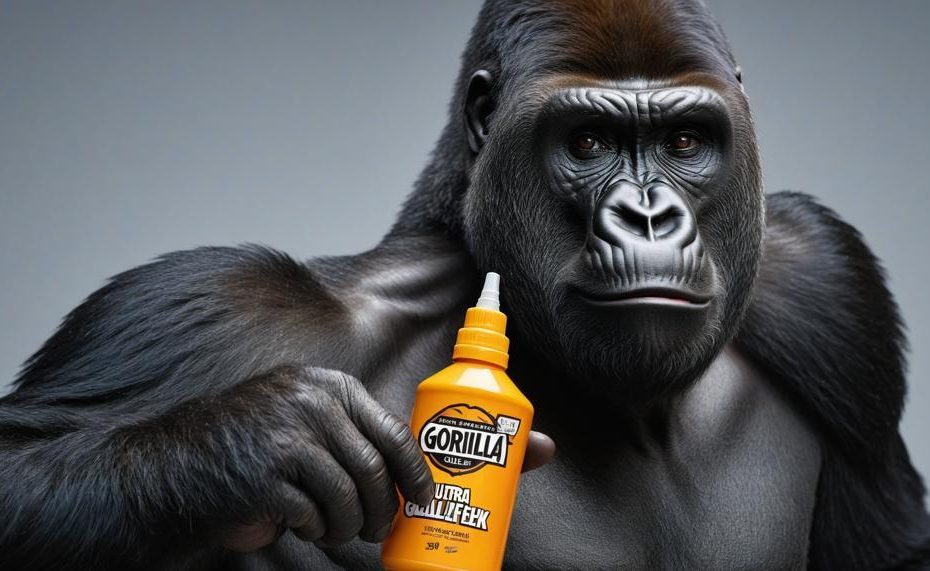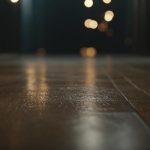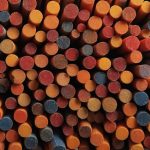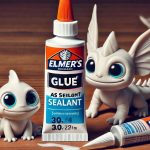Yes, there are different types of Gorilla Glue.
If you’ve ever tackled a DIY project, you’re probably familiar with Gorilla Glue, the go-to adhesive known for its impressive strength and versatility. But did you know there’s more to Gorilla Glue than just one type? That’s right—there’s an entire family of Gorilla Glue products designed to tackle a wide range of tasks. From the original Gorilla Glue, which is perfect for wood, stone, and metal, to specialized products like Gorilla Tape and GorillaWeld, there’s a solution for virtually any repair or construction need.
Key Takeaways:
- Variety: Gorilla Glue offers multiple types of adhesives to suit different materials and projects.
- Original Gorilla Glue: Ideal for bonding wood, metal, ceramics, and more.
- Gorilla Tape: Known for its heavy-duty, weather-resistant sealing capabilities.
- GorillaWeld: A powerful epoxy suitable for tougher repairs requiring maximum strength.
Whether you’re fixing a broken chair leg, sealing a leaky pipe, or working on a major renovation, understanding the different types of Gorilla Glue can make all the difference. Dive into the specifics of each product to find the perfect adhesive for your next project.
Table of Contents
What Makes Gorilla Glue Unique?
Gorilla Glue stands out in the adhesive market due to its formidable strength and versatility. Its unique formula ensures a strong bond on a wide variety of materials, including wood, metal, stone, foam, glass, and more. Here’s a detailed comparison of Gorilla Glue against other popular glue types:
| Glue Type | Strength | Applications | Water Resistance | Drying Time |
| Gorilla Glue | Extremely high | Wood, metal, stone, ceramic, foam, glass, etc. | Excellent | 1-2 hours initial cure, 24 hours full cure |
| Epoxy | Very high | Metal, wood, plastic, ceramics | Good | 5 minutes to 1 hour initial cure, 24-48 hours full cure |
| Super Glue (Cyanoacrylate) | High | Plastic, metal, rubber, glass | Poor | Instant bond |
| PVA (Polyvinyl Acetate) | Medium | Wood, paper, fabric | Poor | 30 minutes to 1 hour initial cure, 18-24 hours full cure |
| Polyurethane Glue | High | Wood, metal, plastic, stone | Excellent | 1-2 hours initial cure, 24 hours full cure |
Key Differentiators:
- Strength: Gorilla Glue is renowned for its superior bonding strength, making it ideal for heavy-duty repairs and projects. It’s often considered stronger than epoxy and polyurethane glues in many applications.
- Versatility: Unlike super glue, which excels in bonding small, non-porous surfaces, Gorilla Glue works on a vast array of materials, both porous and non-porous.
- Water Resistance: Its exceptional water resistance makes it suitable for both indoor and outdoor projects, unlike PVA glues which tend to fail in moist conditions.
- Drying Time: While super glue bonds almost instantly, it lacks the durability of Gorilla Glue. The initial drying time of Gorilla Glue is reasonable, and it achieves a robust full cure within 24 hours.
- Expanding Foam: Gorilla Glue expands as it cures, filling gaps and providing a stronger hold. This feature is particularly useful for uneven surfaces but requires careful application to avoid excess glue.
Gorilla Glue’s unique properties make it a top choice for tough jobs where strength and durability are paramount. Whether you’re fixing furniture, repairing household items, or working on construction projects, its reliable performance is unmatched.
Types of Gorilla Glue
Gorilla Glue offers a diverse range of adhesive products designed to meet various bonding needs. Here are the different types available, along with their unique features and uses:
| Type | Features | Uses |
| Gorilla Super Glue |
|
|
| Gorilla Wood Glue |
|
|
| Gorilla Epoxy |
|
|
| Gorilla Glue (Original) |
|
|
| Gorilla Clear Grip |
|
|
| Gorilla Construction Adhesive |
|
|
Uses of Gorilla Glue
Gorilla Glue has carved a niche for itself due to its strength and versatility. Below are some common applications and differences from other glues:
Applications:
| Application | Description | Example |
| Woodworking | Joins wood pieces securely, ideal for both indoor and outdoor use. | Furniture repair, outdoor decks. |
| Repairing Materials | Bonds diverse materials like metal, stone, and ceramic. | Fixing mugs, plates, and jewelry. |
| Construction | Used for durable and waterproof bonding in construction projects. | Leaky roofs, concrete reinforcement. |
Differences from Other Glues
Strength:
- Exceptional Bonding: Gorilla Glue is known for its strong adhesive properties.
- Versatility: Can bond various materials unlike traditional white or yellow glue which are mostly water-based and less strong.
Application Process:
- Moisture Activation: Requires damp surfaces to activate the curing process.
- Expansion: Expands as it dries, filling gaps or voids, which traditional glues do not do.
Durability:
- Waterproof: 100% waterproof once cured, unlike many water-based glues.
- Temperature Resistance: Can withstand temperatures from -40°F to 200°F without losing strength, making it more robust compared to other adhesives.
Gorilla Glue’s unique properties make it a standout choice for various applications. Its strength, versatility, and durability set it apart from other types of glue, making it a trusted adhesive for both DIY enthusiasts and professionals.
Tips for Using Gorilla Glue
When using Gorilla Glue, it’s crucial to follow specific guidelines to ensure optimal performance and safety. Below are some key tips for using different types of Gorilla Glue effectively.
General Tips for All Gorilla Glue Types
Surface Preparation
Ensure surfaces are clean and free of dust, oil, and grease. Sanding surfaces lightly can enhance bonding strength.
Application
Apply a small amount of glue to one surface. Gorilla Glue expands as it cures, so less is more.
Clamping
Clamp the pieces together for 1-2 hours. Use heavy objects if clamps aren’t available.
Ventilation and Safety
Work in a well-ventilated area. Wear gloves to prevent skin contact, as Gorilla Glue can irritate the skin.
| Type of Gorilla Glue | Specific Tips | Recommended Uses |
| Gorilla Super Glue |
|
Best for quick repairs on small surfaces like plastic, metal, and ceramics. |
| Gorilla Wood Glue |
|
Ideal for woodworking projects and carpentry. |
| Gorilla Epoxy |
|
Perfect for bonding metal, glass, and composites. |
| Gorilla Glue Original |
|
Versatile use on wood, stone, metal, ceramic, foam, glass, and more. |
Precautions and Safety
To ensure the safe and proper use of different types of Gorilla Glue, follow these detailed guidelines:
General Safety Tips
- Ventilation: Always use Gorilla Glue in a well-ventilated area to avoid inhaling fumes. Open windows or use a fan to circulate air.
- Protective Gear: Wear gloves to protect your skin from contact with the glue. Eye protection is also recommended to prevent accidental splashes.
- Storage: Store Gorilla Glue in a cool, dry place, out of reach of children and pets. Ensure the cap is tightly closed to prevent the glue from drying out.
Specific Glue Types and Their Usage
| Type of Gorilla Glue | Application Tips | Safety Precautions |
|---|---|---|
| Original Gorilla Glue |
|
|
| Gorilla Super Glue |
|
|
| Gorilla Wood Glue |
|
|
| Gorilla Epoxy |
|
|
Conclusion
Gorilla Glue is renowned for its exceptional strength and versatility, with a variety of products tailored to specific needs. The original Gorilla Glue, known for its industrial-grade hold, is perfect for materials like wood, metal, and stone. However, Gorilla Glue’s product range extends far beyond its flagship adhesive.
Gorilla Tape offers heavy-duty, weather-resistant sealing capabilities, making it ideal for outdoor repairs and projects. For tougher fixes requiring maximum strength, GorillaWeld, a potent epoxy, delivers unparalleled bonding power. Additionally, Gorilla Wood Glue is a go-to for carpentry and woodworking due to its strong, water-resistant bond.
The diversity of Gorilla Glue products ensures there’s an adhesive for virtually any task, from quick household fixes with Gorilla Super Glue to extensive construction projects using Gorilla Construction Adhesive. Each type is designed with specific features to cater to different materials and conditions, making Gorilla Glue a versatile tool for any DIY enthusiast or professional.






